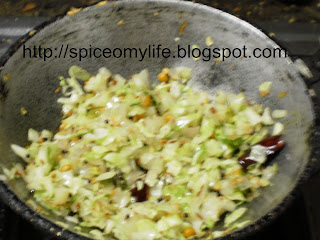In order to understand any art, craft or language and especially the cuisine, one has to know something about the region, the people, their traditions, cultures, climatic conditions, their local produce. That way we can get a grip over the style of cooking. At least I believe in this.
I am going to introduce to you, our Indian Cuisine in a series of posts so that you can learn something of our lives, culture and traditions related to our cuisines.
Indian cuisine is as diverse as our people, languages and cultures and varies from region to region, culture to culture and even family to family. So we can say that our cuisine is a potpourri of many regional cuisines. Our cuisine has been influenced to a great extent by;
- Many invaders and traders form other parts of the world since the ancient times, like Turkey, Arab, Persia, China, Central Asia, Europe etc
- Especially during the colonial period, by Continental cuisine
- Various religions, beliefs, traditions, cultures, taboos,
- Especially, the diversity in geographical climatic conditions ranging from tropical, arid, alpine conditions,
- Different and varied local produce such as vegetable, spices fruits, due to different climates
- The most important factor being on the one hand, the tolerance, flexibility existing here which allow the intermingling of cultures, yet the taboos and strict adherence to traditions which maintain the purity on the other hand
Brief History:
Thus our cusuine is sophisticated and is unique in its own way, due to the use of various spices, herbs and condiments, widespread vegetarianism, a wide assortment of delicacies and cooking styles and techniques.
As early as the Indus Valley Civilisation, wheat , barley, sesame, brinjals, etc were known to Indians. In the later periods, turmeric, cardmom, black pepper, mustard and many other herbs were known to the people. It is believed that many recipes were used during the early Vedic times,when food consisted of agriculture produce, hunting and forest produce and included vegetables,fruits, grains, honey, meat, fish and dairy products, etc. Later as people embraced the Ahimsa or non violence, vegetarianism became wide spread, strengthened by Buddhism and Jainism.
It is believed that, the invasions Arabs, Persians and others new vegetables, like potatoes, tomatoes and chillies were introduced as well as some baking techniques. Mughlai Cuisine which is rich and lavish, was the result of the blending of Indian and Islamic cuisines which led to, tandoori style of baking or cooking, dishes like Biryani, Pulao, Kebabs, Nans, using of fruits like the melons, peaches, apricots, walnuts, almonds etc.
Indian Food-Basic Elements:
Here are the basic elements of Indian cuisines which are frequently used in general. When I am dealing with specific regional cuisines I will go in depth.
- Staples-Rice, Wheat (whole wheat flour), Jowar, Bajra, Corn and Ragi
- Pulses- Bengal gram (chana dal), Red gram (masoor), Pigeon pea (tuvar), Black gram (urad), Green Gram (moong)
- Oils-Ghee, Butter, Peanut oil, Mustard oil, coconut oil, Gingely oil and Hydrogenated vegetable oil.
- Mostly vegetable oils are used for cooking.
- Spices-Cardamom, Cinnamon, Cloves, Nutmeg, Saffron, Turmeric, Cumin, Fenugreek, Coriander seeds, Caraway seeds, fennel seeds, dried red chillies(peppers), black pepper, dried ginger, fresh ginger, Garlic, Bay leaf, coriander greens, Fenugreek greens, Mint leaves and Curry leaves, fresh and dry coconut, dates, cashes, almonds, raisins and many more.
In most of Northern and Western India daily fare consists of Breads roasted on hot pans or fire called Rotis, Naans, Kulchas made of whole/refined wheat flour along with curries made of vegetables or non vegetarian, like chicken mutton etc, chutneys, pickles, milk, curds, buttermilk, ghee, butter,Cottage cheese (Paneer). Tea is the most popular beverage.
In Southern Eastern and parts of Western India, daily fare consists of mainly, Rice, veg and non veg curries including sea food and coconut in coastal areas, Sambar and Rasam (something like soup), Curds, buttermilk, ghee, pickles, chutneys and Poppadoms. Most widely used beverage is Coffee.
Sweet dishes, desserts, fruits and other snacks etc are of course consumed through out India. Some are common through out but some of the delicacies are unique to particular regions. However, its common sence that the delicacies or dishes will contain those ingredients which are mostly produced locally.

This is a typical South Indian Masala (spices) Box, containing split bengal gram, split, black gram, mustard seeds, coriander seeds, fenugreek seeds, cumin seeds, dried red chillies, turmeric, red pepper powder, curry leaves. Whats missing here is the Asafoetida. All these are used for seasoning the dishes.

Here you can see dried ginger in the center, bay leaf, cloves, onion seeds, cinnamon, green and yellow cardamom and black pepper. These are only a few of the many spices we use.
Red peppers and garlic exposed to the sun for few minutes before pickling. Andhra Pradesh is very famous for its pickles which includes mango and red chilly pickle.

So in the next post I will discuss various regional cuisines....till then.....































